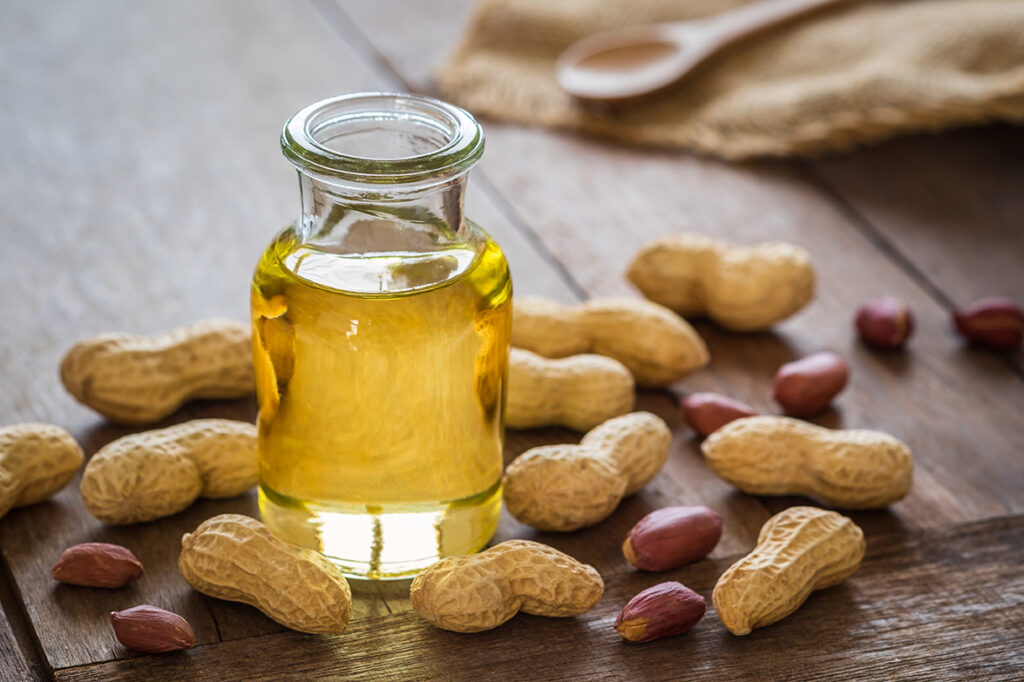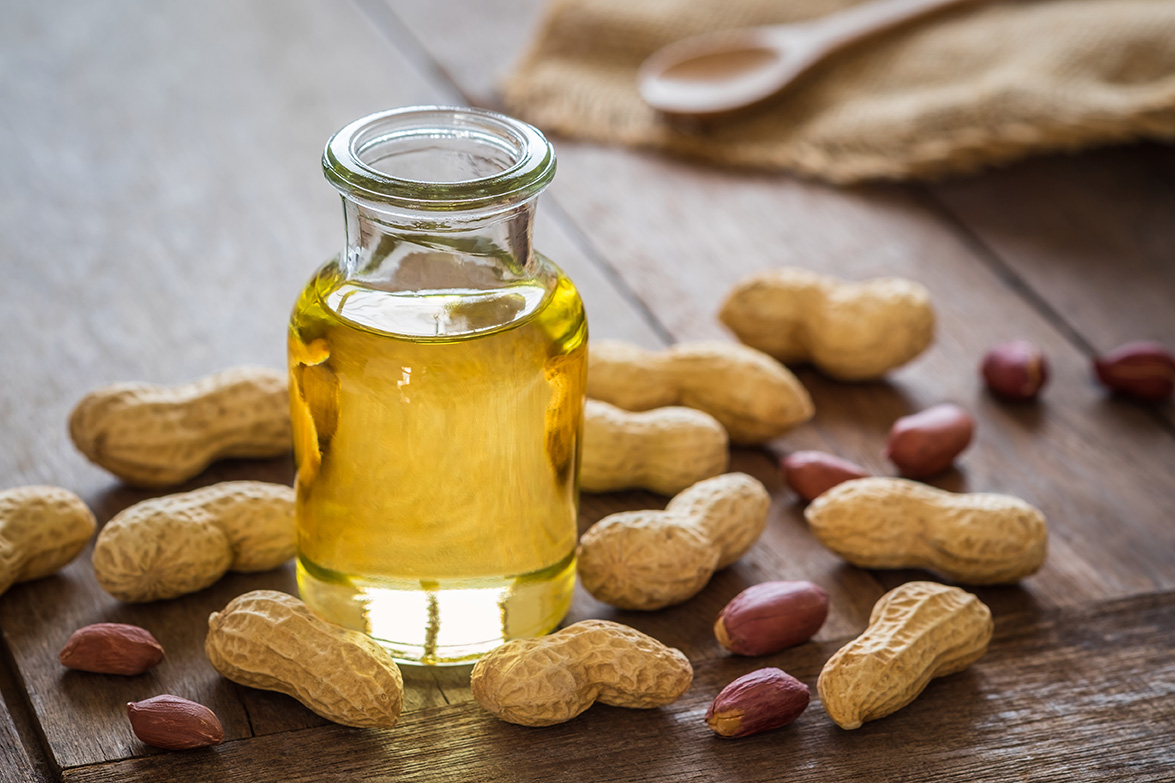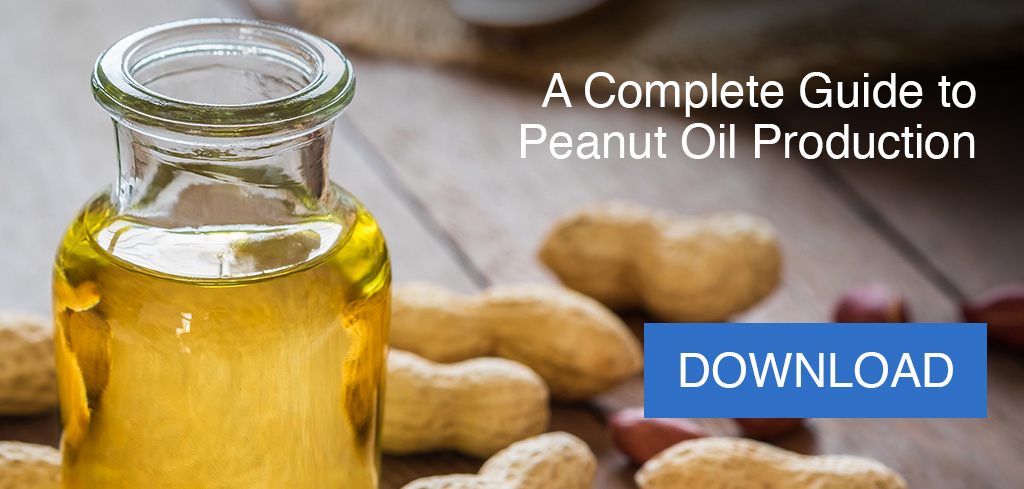
Peanuts dominate as the most popular nut in America, where each person eats more than seven pounds per year on average. While Americans tend to favor this snack as a spreadable nut butter, this tasty seed is popular around the world as a versatile ingredient rich in protein, fiber, and oil.
Although peanuts are most often sold whole to supply the snack food industry, peanut oil extraction represents a growing sector of the market. Peanuts that don’t meet the specifications for direct consumption can be crushed to produce a premium cooking oil prized for its high smoke point and neutral flavor. The meal and other byproducts of peanut oil extraction can supplement livestock feed — providing nutrients throughout the food chain, from the field to the fryer.
To tap into this value-add product, processors need to overcome the challenges of pressing peanuts—which are technically not a nut but a legume, like soybeans. Like other legumes, peanuts contain anti-nutritional factors and other contaminants that could potentially be toxic. Without the proper equipment and expertise, peanut oil extraction can create a costly mess and even pose a safety hazard.
Here’s what processors need to know about producing peanut oil safely and efficiently to squeeze the most value from these snackable seeds.
Peanut cultivation and composition
The peanut plant (Arachis hypogaea) takes its name from two Greek words meaning “weed” and “underground,” describing its unique growing habits. The plant grows above ground like other beans and peas, but the fertilized flowers bend down and penetrate the soil surface, forming pods that ripen underground. Each plant can yield up to 50 peanut pods.
Peanut’s potential problems begin underground. Fluctuating moisture levels in the soil can cause the pods to split, opening the door to pests, mold, and diseases. Peanuts are prone to fungi like Aspergillus flavus, which can create harmful aflatoxins that are toxic to humans and animals.
Aflatoxins can also invade later in the production process after peanuts are harvested. Machines dig out the entire plants, which are stacked and left to dry for several days before stripping the pods. Harvested pods are dried to 6-8% moisture before storage, but inconsistencies in this drying process can create the conditions for fungi to multiply, inviting aflatoxin contamination.
Aflatoxins thrive at temperatures between 20-30 degrees Celsius with relative humidity (RH) between 85-95%. Ideally, peanut storage should not exceed 84% RH, corresponding to seed moisture content of 10-11% for unshelled pods or 6-8% for shelled kernels. Properly cultivating, drying, storing, and inspecting peanuts early on determines the product quality of the seed and its resulting products.
Pretreating peanuts for extraction
Aside from the 5% of peanuts sold in-shell in the U.S., most peanuts begin their processing journey at shelling mills, where machines with perforated grates and wind separators remove the kernels from the hulls. The hulls can be used as mulch, animal bedding, livestock feed, and even fiberboard.
In the U.S., most of these shelled kernels (56%) supply peanut butter manufacturers, while 19% are enjoyed as snacks, 17% as candy, and 3% as ingredients for other foods. The off-color and undersized kernels that don’t make the cut for these markets are diverted to extract peanut oil.
Peanut kernels, on average, contain between 45 and 55% oil by weight. This is nearly three times the oil content of soybean, which has 19-24% oil by weight. Before crushing these oil-rich seeds, they require specific pretreatment steps. The first two steps—cleaning and shelling—happen before the peanuts arrive at the oil mill.
Inside the peanut oil extraction plant, roller mills crack the peanut kernels into smaller pieces to increase the surface area for conditioning and pressing. This also removes the peanut skins, which can be blown off with an air separator.
Then, cracked peanut material is conditioned in stacked cooking and drying vessels. This cooking process is critical to the resulting flavor and quality of the oil. Excessive heat can scorch the seeds, reducing oil yield and quality. Insufficient cooking/conditioning will cause the peanuts to turn to peanut butter when pressed.
Proper cooking prepares the peanuts for more efficient pressing by:
- Convert fluid state proteins to solid state
- Reducing the moisture level to 2-3%.
- Rupturing the cell walls to release the oil.
- Destroying bacteria and other anti-nutritional enzymes.
Peanuts contain many of the same anti-nutritional enzymes as other legumes, although the trypsin inhibitor activity is only a fraction of what’s found in soybeans. Even though these enzymes are less prevalent in peanuts, proper heat treatment is critical to deactivate them thoroughly.
Peanut oil extraction
Oil is crushed from cooked, dried peanut material in a screw press or oil expeller, which uses the mechanical force of a revolving barrel to squeeze the oil from the solid meal. Peanut’s high oil content requires double pressing to obtain maximum oil yields since the meal may still contain up to 14-20% residual oils after the first press.
Double pressing increases a plant’s energy consumption and equipment footprint, adding extra costs to the process. However, the Anderson Super Duo™ Series Expeller® streamlines this process by efficiently crushing the kernels twice in a single pass. This unique dual-press design reduces residual oils to 5-7%, cutting a plant’s energy usage and equipment needs while increasing yields.
Many mills are turning to high-shear dry extrusion systems like the Anderson Dox™ Extruder to streamline peanut oil extraction further. This multifunctional workhorse of a machine efficiently cooks, dries, and shears oilseeds to prepare the material for more efficient pressing. It even adds an optional drainage cage to collect the excess flow from oil-rich seeds like peanuts, which would otherwise flood most extraction equipment.
Peanuts should be conditioned with preheating before hitting the extruder to prevent the nuts from turning into peanut butter and clogging the machine. Then, a rotating screw pushes peanuts through the extruder, similar to an expeller. The high-temperature, high-pressure, high-shear environment breaks down the kernels, releasing the oil for easier recovery. Installing a high-shear extruder like the Dox upstream can double the life of the press and reduce oil residuals to less than 6%.
Peanut oil potential
Peanut oil is a popular choice for cooking and frying because of its high smoke point and ability to hold up under high temperatures. It contains approximately 46-50% monounsaturated fats and 30-33% polyunsaturated fats. Plus, it is naturally trans-fat-free, cholesterol-free, low in saturated fats, and high in unsaturated fats. Additionally, it’s packed with various vitamins, minerals, antioxidants, and other nutrients. These qualities can help lower cholesterol, reduce inflammation, and reduce the risk of cardiac disease. Beyond its usefulness as an edible oil, it is a key ingredient in many cosmetic, pharmaceutical, and industrial products.
While whole peanuts still dominate the market for food consumption, peanut oil’s potential continues to grow. The more consumers learn about its health benefits, the faster its demand will increase. The global peanut oil market is expected to grow from its 2020 market size of $9 billion to nearly $14 billion within the next decade.
To keep up with peanut’s growth potential, processors must continue to optimize their approach to pressing this challenging seed. Anderson International has helped peanut oil extraction plants around the world achieve more efficient processing with more profitable results. By leveraging Anderson’s specialized equipment and seasoned expertise, oil mills can position themselves for success as this market grows.

